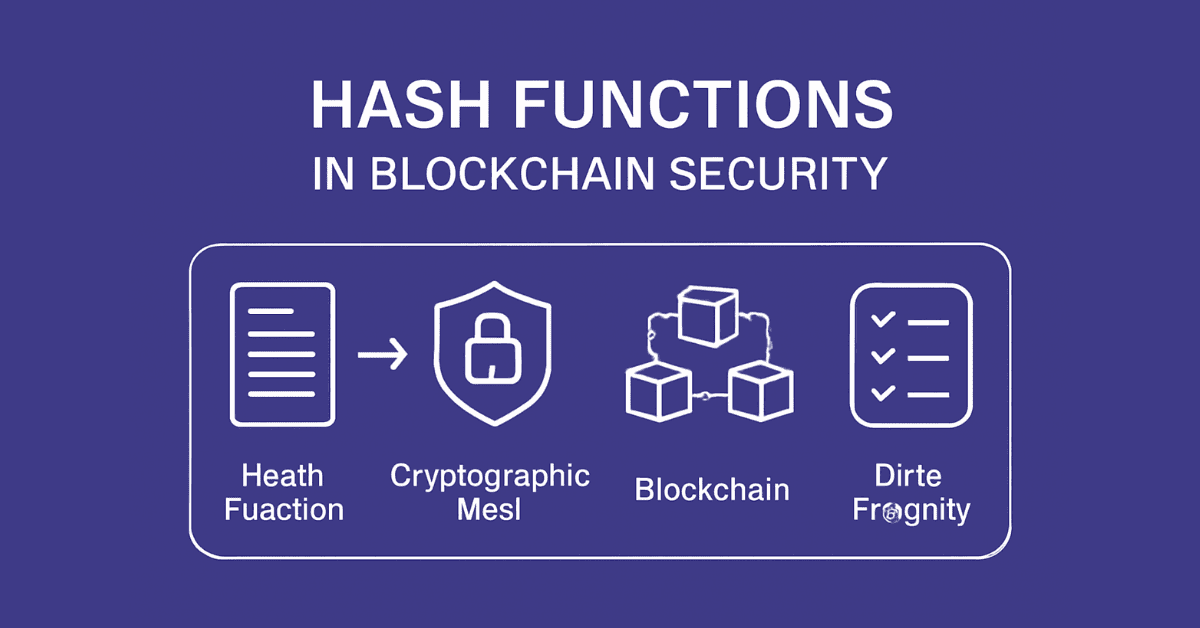
The Role of Hash Functions in Blockchain Security
1. What is a Hash Function?
A hash function is an encryption algorithm that takes an input of any length (e.g., text, numbers, or complex data) and generates a fixed-length string, commonly known as a "hash" or "digest."
Key features of a hash function include:
-
Consistency: Given the same input, the hash function will always produce the same output string.
-
One-way: It is impossible to reverse the hash string to deduce the original data.
-
Fast to compute: Hash strings can be generated quickly.
-
Avalanche effect: A tiny change in the input data results in a completely different hash string.
In cryptocurrency, hash functions are used to protect information, enhance transaction security, and prevent data tampering.
2. The Role of Hash Functions in Cryptocurrency
Hash functions are not only security tools but also the foundation of many blockchain systems and cryptocurrencies.
-
Transaction Integrity Verification: Every transaction on the blockchain is encrypted into a unique hash string. Any changes to the transaction will alter the hash string, helping to detect tampering.
-
Securing Blockchain Blocks: In systems like Bitcoin, each block contains a unique hash string linked to the transactions inside it. The new block contains the hash of the previous block, creating a linked chain. This makes altering a block require changing all subsequent blocks, making it extremely difficult to do.
-
Cryptocurrency Mining: Miners must solve hash problems to discover new blocks and receive rewards, a resource-intensive process but essential to maintain network security.
-
Protecting Personal Information: When users create cryptocurrency wallets, hash functions encrypt security keys, helping to protect the wallet from unauthorized access.
3. Popular Hashing Algorithms in Cryptocurrency
In the cryptocurrency field, several prominent hashing algorithms are widely used to secure transactions and data:
-
SHA-256 (Secure Hash Algorithm 256-bit): The most widely used, employed in Bitcoin and many other blockchains. It generates a 256-bit string with high security, making brute-force decryption nearly impossible.
-
Ethash: Used in Ethereum before it switched to Proof of Stake. It requires large memory to prevent ASIC mining and encourages GPU mining, helping to maintain decentralization.
-
Scrypt: Used in Litecoin. It is less resource-intensive than SHA-256, allowing easier mining with CPU or GPU, making it suitable for smaller miners.
-
Keccak-256: Used by Ethereum after transitioning to PoS. It is an improved version of SHA-3, optimizing security and performance.
4. The Importance of Hash Functions
Hash functions are critical in protecting blockchain systems from attacks and ensuring data integrity.
-
Detecting and Preventing Data Changes: Any small change in the data creates a different hash string, helping to protect the blockchain from tampering attacks.
-
Resisting Brute Force Attacks: The 256-bit hash string creates an enormous combination space, making decryption nearly impossible.
-
Maintaining Decentralization: Allows all participants to verify data integrity without trusting third parties.
Despite the many benefits, hash functions face challenges, such as the possibility of hash collisions – when two different data sets produce the same hash string. Additionally, solving hash problems in the Proof of Work mechanism requires significant resources.
5. The Future of Hash Functions in Cryptocurrency
Hash algorithms are expected to continue evolving to meet the growing demand for security.
-
Next Generation: Algorithms like SHA-3 and Blake3 are being researched to improve performance and security, potentially replacing older algorithms.
-
Quantum Resistance: Experts are researching quantum-resistant hash algorithms to protect against rapid decryption by quantum computers. Projects like NIST Post-Quantum Cryptography Standardization are selecting new algorithms.
-
Wider Applications: Hash functions are also expected to be applied in new security mechanisms like Zero-Knowledge Proofs, enhancing user security and privacy.